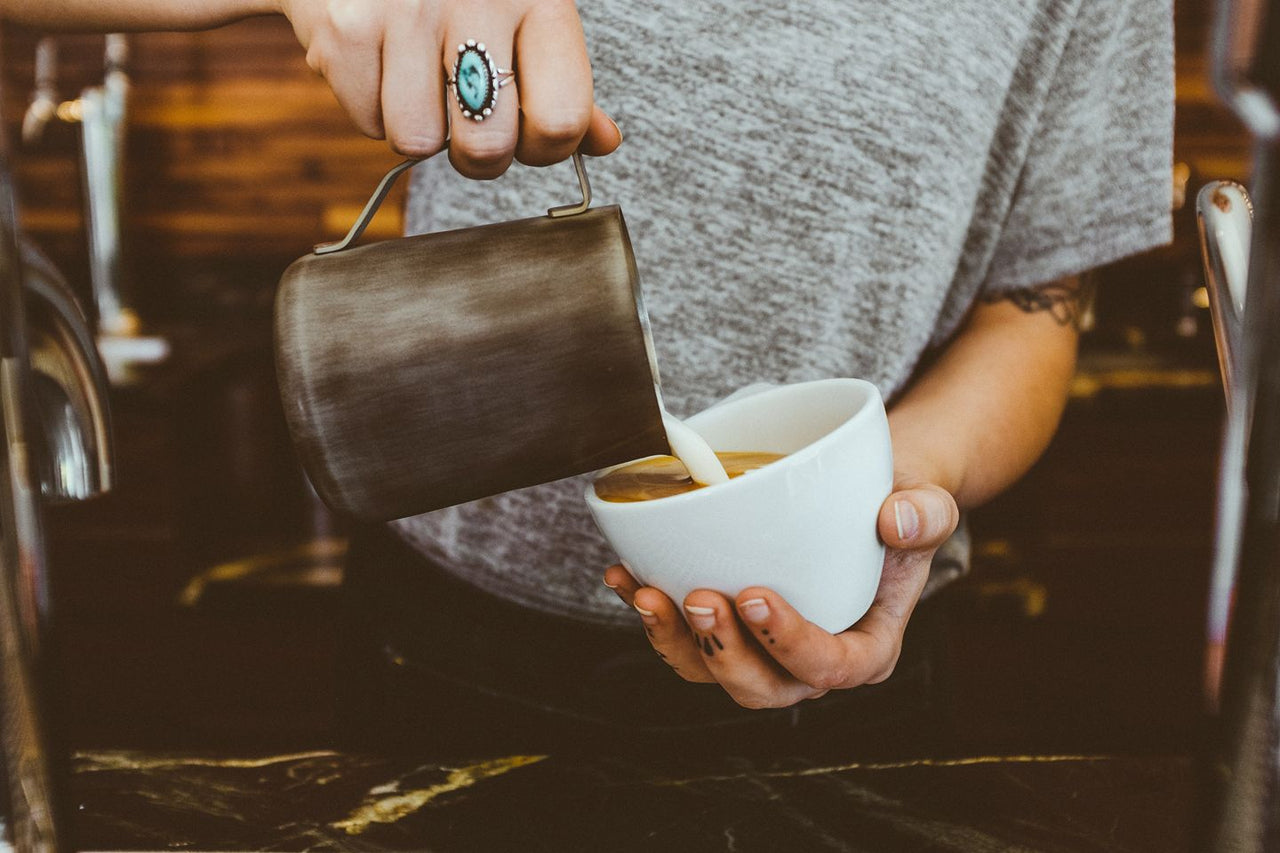Featured, News and Upcoming Events
Women in Coffee -Mica Villasenor
February 29, 2016 | Alex Koeppen
Featured, News and Upcoming Events
February 29, 2016 | Alex Koeppen
In celebration of International Womens Day on March 8th we’ve interviewed two women and asked them to talk about their views and experiences of being a woman in the coffee industry. Our first interview is with our very own coffee roaster Mica Villasenor.
Q: How long have you been in the coffee industry?
A: Since High School really…so 15 years! Oh my. I started working as a Barista at a local drive thru. We actually served Caravan Coffee.
Q: What is it that drew (or draws) you to coffee?
A: I think initially, as a teenager I just wanted a job. (I may have also had a crush on the guy that got me the job.)  Once I started, I found myself fascinated by everything about coffee. I really gravitated to the agricultural side of coffee, because I grew up on a plant nursery and my family had a side business of ornamental tree/shrub propagation. I find coffee plants are beautiful and distinct. I’ve also been one to seek or learn new things, and in the coffee world there is no limit to what you can learn.
Once I started, I found myself fascinated by everything about coffee. I really gravitated to the agricultural side of coffee, because I grew up on a plant nursery and my family had a side business of ornamental tree/shrub propagation. I find coffee plants are beautiful and distinct. I’ve also been one to seek or learn new things, and in the coffee world there is no limit to what you can learn.
Q: What is the most challenging part of your job?
A : Understanding my supervisor and his accent…I‘m kidding. I think the most challenging part is staying on top of the education and technology that enhances/simplifies the roasting process.
Q: What is the most rewarding part of your job?
A: Honestly what I find most rewarding is knowing that when I roast coffee, I’m helping a farmer’s child go to school or get medical care, or a habitat for a species of plant/animal is being protected. I respect and admire the activism aspect within the coffee world. The Specialty Coffee realm, specifically, focuses on maintaining higher ethical, humane, and ecological standards as compared to your run of the mill coffee producers. Although conditions of most coffee farms around the world often fail to meet the level I would like to see,
I’m impressed by the progress the Specialty Coffee Association of America has elicited and continues to improve upon. I’m very grateful that my job and the company I work for focuses on these matters when sourcing coffee. Compared to even ten years ago, working conditions and environmental stewardship has improved, and that eases my soul a bit. There is also some appreciation for my work when I get to observe happy customers sipping on a freshly poured cup, smiling when they are being educated about the coffee, or when children (or grown children) peer in the window with a look of intrigue as I roast. There is a direct view from the roasters to the tasting room at Caravan, and I get to see this almost everyday.
Q: If you could visit one coffee growing region which would it be and why?
A: Oooh…that’s a hard one. Perhaps Peru. We (Caravan Coffee) source some coffee through a Women run cooperative, Cafe Femenino, which is all over Latin America. We specifically use Peruvian coffee, which happens to be one of my favorite to roast. I would love to see how the ladies work together and the impact they have made in their local growing region.
Q: What is your favorite single origin coffee?
A: I tend to fancy most Ethiopian Coffees…and although we do not carry it at the moment, I enjoy Ethiopian Harrar.
Q: How well do you feel women are represented in your field?
A: I am aware of the existence of other lady roasters. While at conferences I have met many, though the acknowledgement of Lady Roasters is a bit scant.
Q: What is the importance of women in the coffee industry?
A: It’s huge, because women currently make up about 85% of the workforce in coffee production.
Q: If you could change one thing in the coffee industry today what would it be?
A: The industrialized agriculture of coffee. What does that mean? Any industrialized mono-culture creates havoc on the land and environment. In regards to the coffee growing regions; the biodiversity of both plants, animals, as well as the natural resources are compromised, ensuing complications with the health and welfare of the local population.
Plus, good coffee is best grown in areas of high biodiversity, which contributes various nutrients from other plants that enhance the complexity and flavor of the coffee. More biodiversity also protects coffee plants and reduces the use of pesticides. Since it takes a full coffee tree to produce a pound of coffee, you can imagine the acres/hectares of land that is destroyed.
The post Women in Coffee -Mica Villasenor appeared first on Caravan Coffee.
